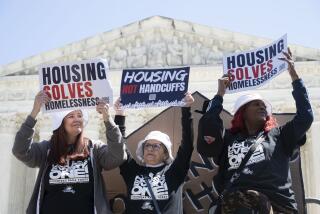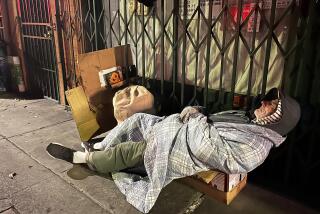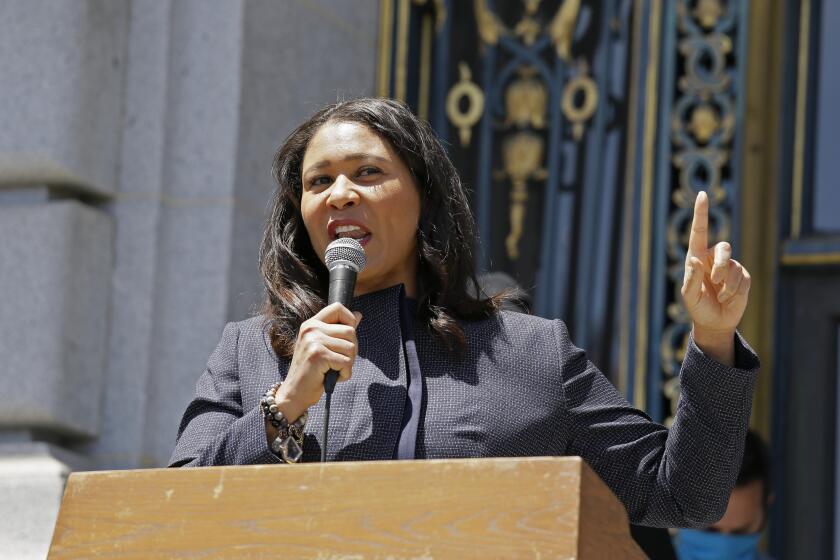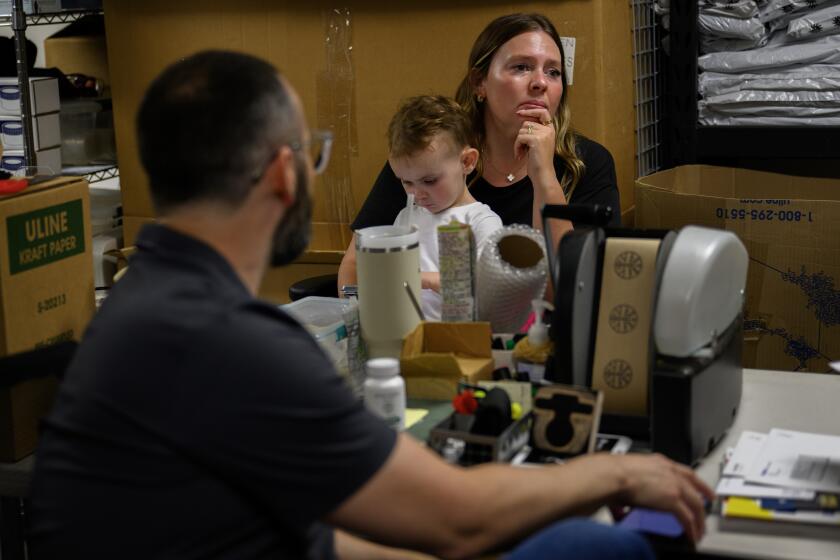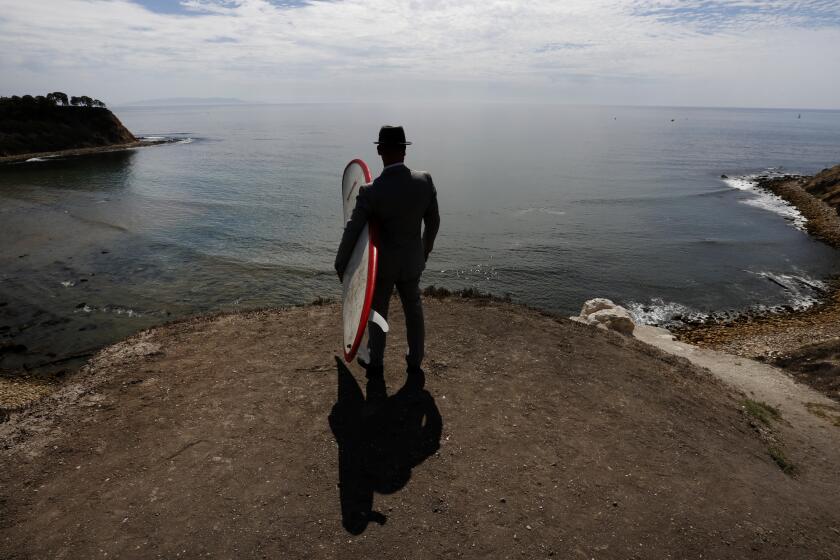L.A. city commission opposes ‘amnesty’ for billboards with permit problems
For years, Los Angeles officials have wrestled with how to clamp down on the proliferation of billboards across the city without trampling the rights of outdoor advertising companies that have built up a powerful lobbying force at City Hall.
On Thursday, the City Planning Commission laid out its proposal for what Los Angeles should do — one that takes a stricter tack toward signs than some city lawmakers had proposed.
It shunned the idea of legalizing hundreds of billboards that lack permits or are out of line with their city paperwork, opposing a controversial proposal that had been floated by some lawmakers as L.A. rewrites its billboard rules.
The commission, whose members are appointed by the mayor, also pushed for the city to be much more demanding about how much existing billboard space must be taken down whenever a company wants to erect a new sign. And it steered clear of the idea of allowing billboards on private property that is outside of a new, narrower set of allowed zones.
Its recommendations now go back to a City Council committee. Any proposed regulations still must be approved by the full council, which could override any recommendations.
But the Planning Commission’s push for stiffer rules could still shift the debate at City Hall by forcing billboard backers to win more council members to their cause. If city lawmakers want to approve any of the less demanding regulations that commissioners rejected Thursday, they will need a supermajority — 10 out of 15 votes — to adopt those rules.
------------
FOR THE RECORD
Oct. 23, 9:04 a.m.: An earlier version of this article misstated the number of votes needed for a supermajority. It is 10 out of 15 votes, not 12 out of 15.
------------
Los Angeles is pursuing a fresh overhaul of city regulations on billboards meant to reduce clutter and distraction on L.A. streets while heading off legal wrangling with the outdoor advertising industry. The debate has pitted neighborhood activists worried about blight against a coalition of billboard companies as well as labor unions and some nonprofits that have touted jobs and revenue generated by erecting digital signs.
The proposed regulations would sharply reduce the areas — called “sign districts” — that are eligible for new billboards. Those districts could include busy corridors such as around Los Angeles International Airport or downtown, or enclosed areas such as shopping centers like the Grove, but not areas near single-family neighborhoods or state parks.
Under the recommended rules, if new billboards are put up, others must come down: For every square foot of a new conventional billboard, five square feet of existing billboards must be removed. And for every square foot of a digital billboard that is erected, 10 times as much would have to come down. Those ratios would be five times higher than the reduction requirements that had been previously vetted by city lawmakers.
Adding new billboards would also require companies to invest in improving the area affected by the signs, through “community benefits” such as widening and repaving sidewalks, installing public art or adding public parking structures that serve walkable destinations.
At the Thursday hearing, the commission flatly opposed the idea of giving “amnesty” to hundreds of existing billboards that either have no permits at City Hall or are out of compliance with their permits — a sign that they may have been altered without city approval. Billboard companies say that city records are spotty — and therefore a billboard that is missing permits may not actually be illegal. L.A. planning officials say it is extremely difficult to prove that billboards lacking permits were put up in violation of the law.
And state law says if no enforcement action is taken for five years, there is a “rebuttable presumption” that a billboard was legally erected. But City Atty. Mike Feuer contends that the city could still pursue action against hundreds of the signs that appear to have been altered.
City commissioners also shunned the idea of allowing more digital billboards to pop up outside of sign districts through a permitting process typically used for businesses such as bars. But they left the door open to allowing digital billboards on some city properties outside of sign districts, saying the city should study that idea further.
City commissioners also plan to continue discussing whether to require billboard companies to show their existing signs have valid permits before allowing them to erect new digital billboards — a possible incentive to take down more of the billboards whose city paperwork is in doubt.
“It’s not a stick, it’s a carrot. You want a digital sign? Great — show us your permits,” said commission President David Ambroz.
But Commissioner Dana Perlman questioned whether such a rule would simply spur advertising companies to sell those potentially problematic billboards to someone else. “I have a desire to get rid of unpermitted illegal billboards.... The question is whether this is the way to do it.”
Ambroz later said that with the Thursday decision, commissioners had “put forward a policy that represents our best efforts to create a predictable business environment and a visually vibrant place to live.”
Though the commission took many stands that were popular with billboard foes — such as opposing the legalization of unpermitted billboards — critics said the Thursday recommendations were not a total victory for their cause. Dennis Hathaway, president of the Coalition to Ban Billboard Blight, said he was concerned that the commission recommended grandfathering in some sign districts that had been initiated in the past.
“That’s a very bad precedent,” said Hathaway, arguing that one such district in Koreatown could allow a battery of new signs.
The L.A. Advertising Coalition, an industry group, said in a written statement that billboard companies looked forward to working with the city “to develop a sign policy that allows for modernization of signage, protects single-family residential areas, provides opportunities for beautification through a thoughtful takedown program and allows digital signage on public and private property.”
“We are supportive of a takedown program that will realize the city’s goals, but not one that will disincentivize participation in a citywide sign program,” group spokeswoman Stacy Miller added.
Follow @latimesemily for what’s happening at Los Angeles City Hall
ALSO:
USGS slams study’s claim of 99.9% chance of large L.A. earthquake
Water bills will creep up next year in L.A. because we’ve conserved so much
Controversial DWP nonprofits to keep $11-million ‘rainy day’ fund
More to Read
Sign up for Essential California
The most important California stories and recommendations in your inbox every morning.
You may occasionally receive promotional content from the Los Angeles Times.

